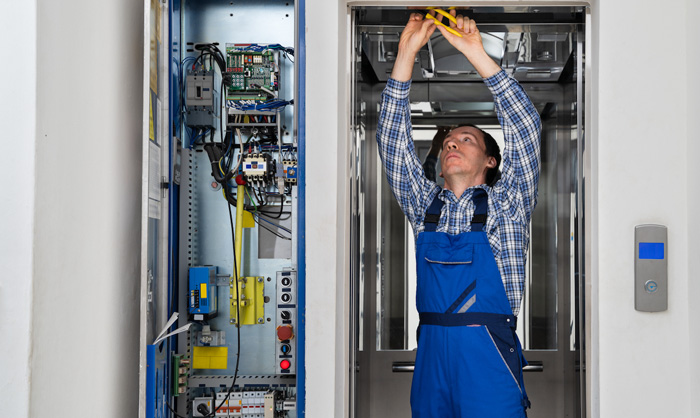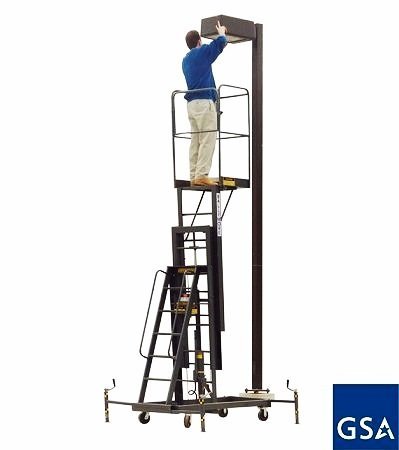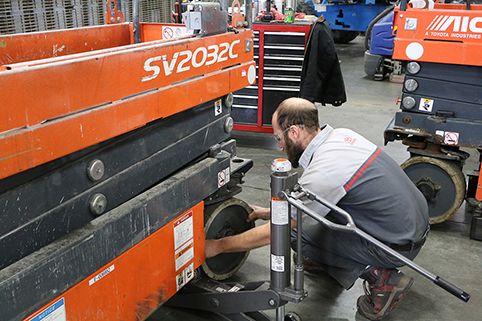Comprehensive Lift Maintenance Repair Solutions for All Brands
Comprehensive Lift Maintenance Repair Solutions for All Brands
Blog Article
Pro Tips for Maintaining Your Lift in Top Condition: A Detailed Summary
Ensuring the optimum performance of a lift system is important for a effective and secure operation in numerous settings, from commercial storage facilities to business buildings. By sticking to a structured maintenance regimen and preemptively attending to prospective concerns, lift proprietors can mitigate costly downtime and safety dangers.

Value of Routine Maintenance
Regular upkeep of your lift is important to guarantee its optimal performance and long life. By adhering to a routine maintenance routine, you can determine and attend to potential issues prior to they escalate into costly repair services or unforeseen downtime. Regular maintenance jobs such as lubricating moving parts, checking for damage, and examining hydraulic systems can aid protect against breakdowns and ensure secure operation.
Neglecting normal maintenance not only compromises the efficiency of your lift yet additionally postures security dangers to users and residential property. Parts that are not effectively preserved may stop working unexpectedly, leading to mishaps or damage to the lift itself. Additionally, resolving problems at an early stage via upkeep can extend the life expectancy of your lift and decrease the likelihood of major break downs.
Along with boosting security and efficiency, normal maintenance can likewise save you money in the future. By buying preventative upkeep actions, you can avoid expensive fixings or substitutes that may develop from overlooking the maintenance of your lift. Generally, focusing on regular maintenance is important for making the most of the functionality and longevity of your lift system.
Leading Components to Check

Additionally, pay very close attention to the lift's security features, such as emergency stop switches, security sensors, and interlocking devices, to guarantee they are functioning correctly. Frequently evaluate the lift shaft for particles or obstructions that could hamper the motion of the lift vehicle. Lastly, don't fail to remember to examine the doors, joints, and door operators to ensure smooth opening and closing procedures. By thoroughly inspecting these top elements, you can catch potential concerns early and ensure your lift remains in leading problem.
Aggressive Troubleshooting Methods
When confronted with prospective lift system issues, adopting positive repairing methods can considerably improve functional performance and protect against costly downtime. Among the vital positive troubleshooting strategies is to routinely monitor and assess lift performance information. By tracking metrics such as lift rate, electric motor temperature, and energy consumption, maintenance groups can determine early indicators of possible concerns and take rehabilitative activities prior to they escalate. Performing routine aesthetic evaluations of crucial components, such as wires, pulley-blocks, and security mechanisms, can also help in finding deterioration or imbalances that can bring about breakdowns. In addition, executing a preventive upkeep routine that includes lubrication of moving components, testing of best site emergency brakes, and calibration of sensors can proactively deal with common lift system issues.
Moreover, investing in training programs for upkeep personnel on fixing techniques particular to the lift design set up can equip them to diagnose and solve issues promptly. By staying in advance of possible issues via positive troubleshooting, lift operators can make certain a smoother and much more reliable procedure while decreasing the threat of unanticipated failures.
Necessary Lubrication Practices
Applying correct lubrication methods is critical for making sure the smooth operation and longevity of lift systems. Routine lubrication helps in reducing rubbing in between moving parts, protecting against wear and tear that can cause costly repairs and downtime. Complying with a rigorous lubrication timetable is important. when it comes to lift upkeep.
Selecting the best lubricating substance is the primary step in effective maintenance. Various parts of the lift system may require particular kinds of lubricating substances, such as grease or oil. Seek advice from the maker's guidelines to identify the appropriate lubes for each and every part.

Attend to any kind of concerns quickly to stop additional damage and make sure the continued smooth operation of your lift system. By focusing on proper lubrication techniques, you can expand the life-span of your lift and optimize its efficiency.
Precaution for Lift Operators
In order to preserve a risk-free workplace and promote operational efficiency, lift drivers must rigorously comply with suggested safety and security protocols, alongside focusing on crucial lubrication methods for ideal lift performance. Safety and security procedures for lift drivers are critical to stop accidents and guarantee the smooth functioning of the lift system. Operators ought to go through complete training on proper lift procedure, emergency treatments, and safety and security standards. Regular tools evaluations and upkeep checks are necessary to determine and resolve any type of potential safety and security risks immediately. It is essential for drivers to constantly adhere to supplier referrals for Check Out Your URL tons abilities, functional limits, and safety and security attributes usage.
Furthermore, lift operators need to focus on personal protective equipment (PPE) such as safety helmets, gloves, go to these guys and safety belt when operating at heights or dealing with heavy lots. Clear communication among drivers, maintenance specialists, and various other workers is important to avoid misconceptions that can lead to crashes. Finally, drivers ought to stay vigilant, concentrated, and avoid interruptions while operating the lift to make sure the safety and security of themselves and others in the location.
Conclusion
Finally, preserving a lift in top condition is important for making certain safety and efficiency in procedures. Routine maintenance, detailed evaluations of essential parts, aggressive troubleshooting, proper lubrication practices, and adherence to safety procedures are important for lengthening the life-span of the lift and preventing mishaps. By following these guidelines, lift operators can make certain the ongoing capability and safety and security of their equipment.
By sticking to a structured upkeep regimen and preemptively dealing with possible problems, lift owners can minimize pricey downtime and security risks. Regularly check the lift shaft for particles or blockages that could hamper the movement of the lift automobile.In order to maintain a risk-free working setting and support functional performance, lift operators should carefully stick to recommended safety procedures, together with focusing on crucial lubrication techniques for ideal lift efficiency. Security steps for lift drivers are essential to protect against mishaps and make certain the smooth functioning of the lift system. Normal maintenance, thorough assessments of vital parts, proactive troubleshooting, correct lubrication techniques, and adherence to safety and security procedures are vital for prolonging the lifespan of the lift and avoiding crashes.
Report this page